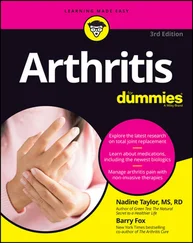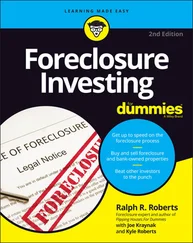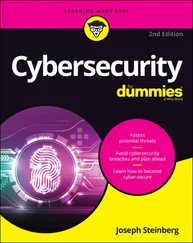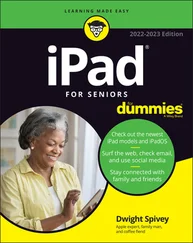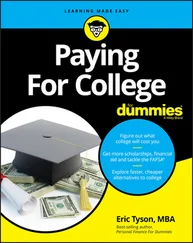You usually figure out your child hasn’t put concept and symbol together when you try to show him how to add or subtract a few of those numbers that he’s been chanting for weeks. That’s when everything falls apart if it’s going to — he may look at those symbols like he never saw them before. For all he knows, you may as well be teaching him to add and subtract Roman numerals.
 There is a way out of this dilemma. The solution is math manipulatives, an educational term for math help that you can get your fingers around. Math manipulatives can truly be anything that you can count or measure with, although some items function better than others:
There is a way out of this dilemma. The solution is math manipulatives, an educational term for math help that you can get your fingers around. Math manipulatives can truly be anything that you can count or measure with, although some items function better than others:
Base-ten blocks: These are counting blocks. Beginning with the one-centimeter cube and the ten-centimeter rod, a base-ten set adds a 100 block that looks like ten of the ten-centimeter rods fused together, and a large cube that represents 1,000. You can add and subtract large numbers with this set; all the blocks come in the same color so they look the same and the learner concentrates on the size instead of the color.
Cuisenaire rods: These ten little rods range from one-centimeter cubes to pieces of wood that are ten centimeters long. Each rod is one centimeter longer or shorter than the others, they come in predictable colors (for example, the five-centimeter rod is always yellow), and you can use them to add, subtract, multiply, divide, and do fractions, among other things. One set of rods contains several of each rod length.
M&Ms: You know them, you eat them, and now you can count with them, too! With a few bowls and a pile of M&Ms, you can add, subtract, multiply, divide, and have snack time all at once! (Fractions are tough with M&Ms.) Do it quickly, though; if you hold them long enough, they do melt in your hand.
Pattern blocks: Using these little plastic tiles, your child learns about patterns, fractions, geometric shapes, and tessellations (patterns that fit into one another and arguably go on forever). Shapes include square, triangle, hexagon, rhombus, and trapezoid. If you want to play with these online before you track them down at your local educational store, visit the Math Learning Center website at apps.mathlearningcenter.org/pattern-shapes .
Pennies: Although half-dollar coins are easier to find on the table, pennies are much cheaper if you happen to be counting to 100. These function the same as M&Ms, but you don’t get the added thrill of eating the chocolate when you finish math class. To drive home the point, you can always make your own ten-count penny sticks by gluing ten pennies to a strip of light cardboard. This way, your child knows there are ten pennies per strip because she patiently sat and glued each one of them. (Use water-soluble glue so you can reclaim the pennies after fourth grade.)
You can use manipulatives with any math program, but some programs are specifically designed for use with hands-on helpers. One of these is Miquon Math ( www.miquonmath.com ). Miquon primarily uses the Cuisenaire rods as manipulatives. Using Miquon, the child learns how to use the rods as he learns the math concepts. Miquon is a little weak in time (clock reading) and story problems, but it’s designed to lay a conceptual foundation in the first three years of elementary school. Children leave Miquon with the equivalent of a fifth- or sixth-grade math education, and they then move on to another program. Here are some other math programs that you may want to take a look at:
Beast Academy: ( www.beastacademy.com/ ) Who doesn’t love a few monsters with their math? This program is designed for kids who like to be challenged. Designed for ages 8–13, each level includes an engaging comic book (called a Guide Book) that teaches the concepts along with a student Practice Book filled with problems and math puzzles.
Key To series: This is where you go after Miquon. The Key To books present a single concept per page, and each set of booklets covers a particular topic: decimals, fractions, percents, measurement, algebra, or geometry. These books say they’re for grades 4 through 12; however, the geometry curriculum is “proofless geometry”; therefore, it doesn’t qualify as regular high-school-level geometry. This curriculum is currently published by McGraw Hill; available from homeschool suppliers or Amazon.
Math Mammoth: ( www.mathmammoth.com ) This curriculum covers grades 1 through 7, and it does it either topic by topic or in a customary progression, your choice. It’s inexpensive as math curriculums go, and it’s comprehensive. Available in either digital or paper format.
RightStart Mathematics: ( www.rightstartmath.com ) This curriculum augments lessons with a ton of varied manipulatives — a math balance, measuring tools, fraction manipulatives, and their own abacus. This is a full and solid math program. Levels A through H cover grades K/1 through about grade 8. (You begin with Level A with a child who cannot add or subtract, regardless of the age.)
Going beyond “Our Community Helpers”
Every first- and second-grade social studies book that I know begins with “Our Community Helpers.” If your child schools at home, however, she probably knows the mailman on a first-name basis. Nobody needs to tell her the friendly school bus driver comes through her neighborhood — she sees the bus go by her house each day while she munches her Marshmallow Wheetos.
If you want to cover community helpers in the first and second grade, be my guest. It certainly won’t hurt your children, although they may be bored out of their minds. You could spend the time talking about your town or city, state, and region of the country instead. Take the children to look at the nearest river. If they’ve never seen a river up close before, you’re sure to get a wow reaction when they see how big it is. And a good river view gives them a basis for understanding those squiggly lines on the globe.
Social studies generally begin with the local and move out; so you start with the interesting facts about your hometown and then, as your students progress, teach about your state, your country, your world. When you throw the history aspect of social studies into the mix, you also move through time, teaching from now to the past or from the past forward. But don’t worry — you have 12 or so years to cover all this stuff, and several publishers create curriculum to make the task easier.
 I happened to have a second-grade social studies book on the shelf when my children were 5 and 6, so I opened it and we covered the entire book as a read-aloud in about six days. That way, I felt emotionally secure in the knowledge that I covered the material, yet the children didn’t look at me with that glassy-eyed when-is-lunch stare because I attempted to stretch the book far beyond its rational limits.
I happened to have a second-grade social studies book on the shelf when my children were 5 and 6, so I opened it and we covered the entire book as a read-aloud in about six days. That way, I felt emotionally secure in the knowledge that I covered the material, yet the children didn’t look at me with that glassy-eyed when-is-lunch stare because I attempted to stretch the book far beyond its rational limits.
Early elementary homeschoolers often take advantage of community field trips to avoid the community helper text and still introduce their children to the world. Most local homeschool support groups schedule trips such as this every year for the younger elementary students. Either join an organized field trip through a support group or organize your own. Consider asking another family or two to join you on your expedition. It adds to the fun and maximizes the company official’s time.
If you decide to do your own field trip, call the establishment well ahead of time to find out the organization’s rules for field trips. Some of these options are extremely popular, and you may find yourself in for a several week wait. Identify yourself as a homeschooler, and if you’re available at virtually any time, be sure to tell the company official so. They appreciate it when you bend your schedule to fit theirs — especially when you visit a building whose main occupation is something other than providing field trips to students! With that in mind, you may want to
Читать дальше
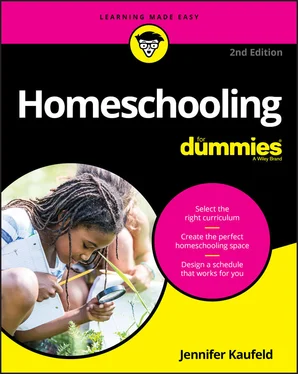
 There is a way out of this dilemma. The solution is math manipulatives, an educational term for math help that you can get your fingers around. Math manipulatives can truly be anything that you can count or measure with, although some items function better than others:
There is a way out of this dilemma. The solution is math manipulatives, an educational term for math help that you can get your fingers around. Math manipulatives can truly be anything that you can count or measure with, although some items function better than others: I happened to have a second-grade social studies book on the shelf when my children were 5 and 6, so I opened it and we covered the entire book as a read-aloud in about six days. That way, I felt emotionally secure in the knowledge that I covered the material, yet the children didn’t look at me with that glassy-eyed when-is-lunch stare because I attempted to stretch the book far beyond its rational limits.
I happened to have a second-grade social studies book on the shelf when my children were 5 and 6, so I opened it and we covered the entire book as a read-aloud in about six days. That way, I felt emotionally secure in the knowledge that I covered the material, yet the children didn’t look at me with that glassy-eyed when-is-lunch stare because I attempted to stretch the book far beyond its rational limits.

